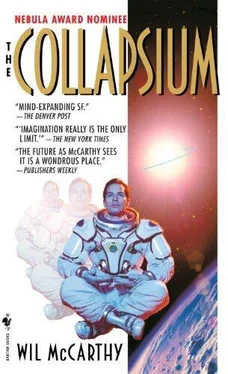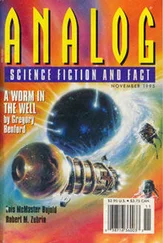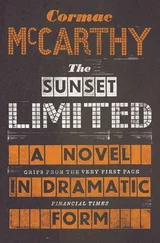That second widening slightly increases the chance that another proton will fall in, which in turn increases the chances of still another, and a few billion iterations later the invading protons are free to crowd around the event horizon and spiral in, forming an ever-widening hole whose mass can eventually grow to disrupt—and finally crush—the collapsium lattice around it.
When a system is in transition from a laminar (or “smooth”) to a turbulent (or “messy”) state, it passes through a condition known as “chaotic frequency doubling,” in which cyclic events come more and more frequently, until finally they smear into a jumble we resignedly call “random.” Examine the trail of smoke rising up from a burning ember or weed pipe in the absence of wind and you can see this phenomenon directly: near the source, the smoke is a thin, clean line, like a length of ribbon. Higher up, it’s a rising and unpredictable snarl of overlapping vortex rolls and curls. In between lies the chaotic transition zone, where single vortices break into double vortices break into quadruple vortices, and so on. This zone leaps up and down as you watch, its position and dimensions malleable in the face of quite small perturbations, but understand that if all the variables were constant— the air perfectly still, the embers’ combustion perfectly uniform—the transition zone would hang exactly so, its frequency doublings happening over and over at the same exact positions, as if rows of invisible knives hung there, cleaving the vortices in twain as they rose, doubling their number with each successive row.
Here’s the kicker: the spacing of these invisible knives is known in advance, regardless of the nature or conditions of the experiment. The interval between the first and second row is larger than the interval between the second and third by a ratio of exactly 4.6692016090. The same ratio, always, for smoke curls or ocean waves or ripples through an electromagnetic field. Feigenbaum’s number: one of the many mysterious constants that underlie our universe.
Normal “empty” space is nothing of the kind, is in fact a catchpool of invisible energies at every possible wavelength, and it’s only when these wavelengths are excluded—by closely spaced conducting plates, by fierce applications of charge and vibration, or, best of all, by sheets or shells of static collapsium—that anything like “emptiness” can actually be achieved. The physicist Hendrick Casimir had proved as much even before the age of space flight, and the Queendom’s communication and transportation networks relied on the principle for their daily operation.
But still Bruno had brooded: this Casimir supervacuum wasn’t really blank, empty, or null. Not completely, not in any fundamental sense. A particle placed within it didn’t freeze in place, locked down by absolute zero, and Bruno had wondered just haw much energy could be pulled from the vacuum before it finally did. An infinite amount for every possible wavelength? Unlikely. So he’d concocted a simple experiment: a spherical shell of collapsium, a kind of pinata of bright pinpoint holes slowly bleeding their mass-energy off as blue-white light. Then he’d measured the difference in vacuum energy between the inside and outside of the sphere. Then he’d put another collapsium shell outside the first— spaced carefully, so the gravitic frequencies would cancel and the two wouldn’t fall in on each other—and measured the energies again.
And then, somehow, even though these steps were fantastically difficult and expensive and demanding of his deepest attention, he’d repeated them eleven times more.
And for what? To learn what? That the vacuum increased with every Onion layer? That the energy difference between layers shrank progressively as one moved inward? That the rate of this shrinkage was neither exponential nor logarithmic nor asymptotic, but spaced—precisely!—according to Feigenbaum’s number? Pi he could maybe have accepted. With greater difficulty, “e” or “i” or, just possibly, “gnu.” But 4.6692016090? What could such a thing imply? That the universe was chaotic straight through to its core? That all of physics was mad?
How absurd.
Electrons, like fluids, resist acceleration but resist compression even more. “Press” on them with voltages, and they flow through the conduits laid out before them, spill down waterfall diodes, choke through bottleneck resistors… Fluid pressure can also power reciprocating devices that slosh the flow back and forth through “alternating current” conduits.
Unlike fluids, though, electrons give rise to electromagnetic fields when accelerated and give rise to oscillating fields when sloshed back and forth. These oscillations can, in turn, affect the motion of charged particles, such as the quarks of which protons and neutrons are made. So imagine an ultrahigh frequency EM field of infinite range, a field whose tugging vibrations universally attract matter of all types. Newton’s phantom “gravitation,” inexplicable for centuries and misunderstood for centuries more.
Lumps of matter emit such fields naturally, in spherically symmetric echoes of the invisible “vacuum” energy storming around them, but even before the Queendom’s rise it was possible—even trivial—to generate tightly focused beams of this “gravity” for industrial or agricultural or sexual purposes. The scene suddenly fell into place around Bruno; here were the power generators, slowly bleeding the dream of matter off into the much more pliable dreams of AC voltage and amperage. Here were the inductors, the accumulators, the LRC loops, exactly as they might appear in any of Bruno’s own EM grapples. And down there at the far end of the station were the hazy forms of the revpic chambers themselves. But where Bruno’s equipment was designed to move individual collapsons, or small collections of them—hence his helplessness in the face of the careening Onion—here around him was a device for holding up millions of black holes against the pull of solar gravity.
Holding what on the other end? What kept the grapple station itself from falling? He tried to imagine the station’s complement beam anchored to Jupiter, and almost laughed out loud at the idea of that giant planet being reeled in like a fish. No, the beam was probably anchored to some huge, distant star, was probably dragging that star sunward, and dragging the entire Queendom of Sol out toward it, altering the paths and positions of the two stars in their slow galactic orbits. Two boats joined by even a very long elastic cord were doomed, eventually, to collide, yes? In a million years, perhaps, if the cords weren’t cut before then.
They would be cut if the collapsiter was ever finished—if the Queendom managed to survive its construction.
“Muons are short-lived,” Bruno noted, perhaps too gruffly. “Time dilation has extended their life spans?”
“Indeed,” Marlon said. “They’re quite close to the event horizons, and moving at very nearly the speed of light. Plays hell with the collapsium, I’m afraid—relativistic mass increase is enough to disturb the gravitational balance. For a while, I was seriously thinking the whole region might deconstitute and become a single, massive black hole.”
“Hmm. You’ve since ruled this out?”
Marlon shrugged uneasily. “There are a lot of variables. What equilibrium the system has found is chaotic equilibrium—the collapson nodes wander in and out of phase at irregular intervals. So far, they haven’t wandered far enough to lose gravitational rigidity, but the margin is slim, about twenty percent. It seems to be holding—that’s about all I can say.”
Читать дальше












